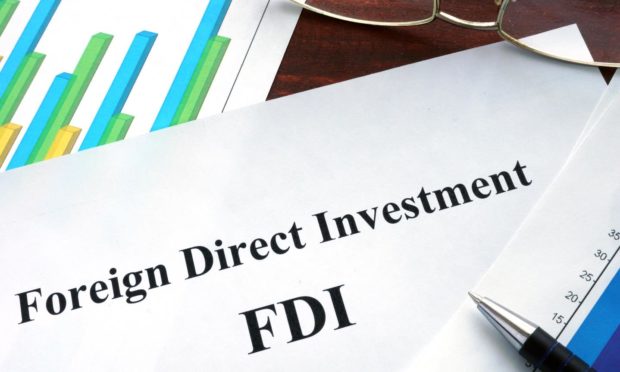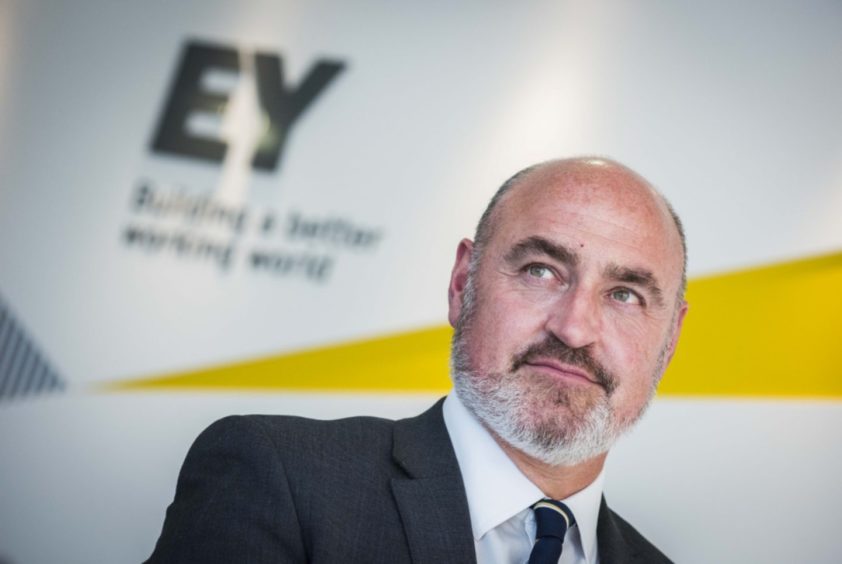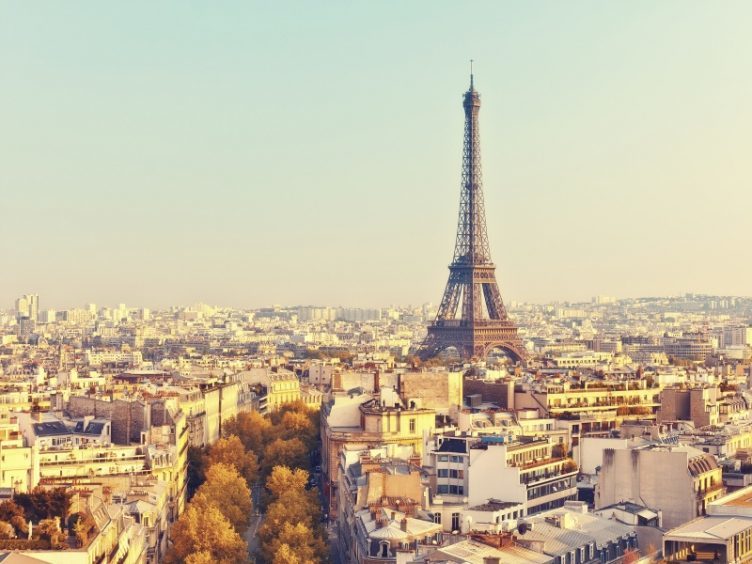Scotland is an increasingly attractive place for inward investment, new figures show.
The country bucked a Europe-wide negative trend for foreign direct investment (FDI) last year by growing the number of FDI projects – despite the pandemic – by 6% to 107.
This is compared with a 12% year-on-year drop for the whole UK, to 975 projects, and a sharper 13% fall throughout Europe, to 5,578.
Scotland has put in an impressive performance over the past year.”
Ally Scott, managing partner, EY Scotland
The figures, from global professional services giant EY, also show Scotland’s share of UK FDI projects rose to 11% last year, from 9.1% in 2019.
Scotland’s three largest cities are all in the UK’s top 10 for FDI investments outside London during 2020.
Edinburgh heads the list – the Scottish capital was home to 36 projects last year and has leapfrogged Manchester into first place.
Glasgow (23 projects) and Aberdeen (13) are fifth and seventh respectively.
These findings continue Scotland’s inward investment success story.”
Scottish Government spokesman
New FDI projects in Scotland – as opposed to reinvestments – bounced back to their highest level for five years during 2020, totalling 61, after three consecutive years of decline.
Scotland increased its market share of all new projects coming into the UK to 8.4%, from 5.9% in 2019, EY’s 2021 Scotland Attractiveness Survey found.
Digital technology (19 projects), agri-food (14), business services (11) and oil and gas (nine) were the top sectors for FDI investments in Scotland last year.
The US, Ireland and the Netherlands were the top non-UK origins for investment.
“Scotland has put in an impressive performance over the past year”, EY Scotland managing partner Ally Scott said.
He added: “Beneath the headline figures, there are further reasons for optimism almost everywhere you look: the one-third rise in ‘new’ projects; the diverse spread of sectors attracting FDI, with digital tech leading the way; or, compared to last year, the fact that more than twice as many investors cited Scotland as the UK’s leading FDI destination.
“With investment intentions into the UK overall also at a record high, there’s every prospect of Scotland winning a healthy proportion of a resilient pipeline of investments in the coming months and years.”
‘Strong base from which to build’
A Scottish Government spokesman said: “These findings continue Scotland’s inward investment success story.
“Scotland’s leading position was underpinned by strong investment in renewables, clean technology, life sciences, fintech and agri-food.
“This supports the approach of the Scottish Government’s inward investment plan to further internationalise the economy by focusing efforts on our existing global strengths.”
The spokesman added: “This outstanding performance provides a strong base from which to build as we continue our national endeavour to transform Scotland’s economy, and create high quality, secure and sustainable jobs across the country.”
Top performer outside London
Scotland has been the UK region with the second highest number of overseas-backed FDI projects, after London, every year since 2014.
Some 15% of investors surveyed by EY as part of the research said Scotland was the most attractive part of the UK in which to invest – double the proportion saying the same in 2019 (7%) and, compared to the rest of the UK, behind only London (25%).
Mr Scott said: “Scotland has now narrowed the gap significantly with London, which continues to lead as the most attractive region to establish operations.
Gaining ground
“The scale of this two-year shift is illustrated by London’s vote as most attractive region almost halving since 2019, while Scotland’s has more than doubled.
“As well as being firmly established as the UK’s second biggest recipient of FDI projects behind London, Scotland is now also in clear second place in terms of attractiveness, well ahead of third-placed south-east England.”
But this is “no time for Scotland to rest on its laurels”, Mr Scott said.
He added: “As we look to the economic recovery from Covid-19, constructive, practical engagement between business and both the UK and Scottish governments remains key to shaping the right policies, business environment and incentives to give investors continued confidence to invest.
Competitive market
“While our findings suggest Scotland is getting a lot right, the global market for FDI will only become more competitive, making it vital to keep listening and responding to what investors want.
“Our report shows that this includes the availability and skills of the local workforce, the strength of business networks locally, and access to regional grants and incentives for investment and R&D (research and development).
“There is also a rising focus on sustainability and cleantech – areas where Scotland’s strength is exemplified by COP26 taking place in Glasgow later this year.”
Mr Scott said Scotland had “laid down a strong base for future FDI”, adding: “Now it’s time to build on that and to capitalise on the attractiveness of our country as a place to do business.”
The UK has missed out on Europe’s top spot for FDI for only the second year in the survey’s two-decade history.
But the gap has closed on France (985 projects last year), which has now topped the list for two consecutive years. Germany is ranked third for 2020, with 930 FDI projects.
Meanwhile, London has reclaimed its status as Europe’s most attractive city for investment, overtaking Paris.


